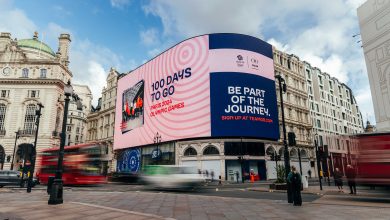How do you plan for decision making?
It’s a question to ask yourself on a daily basis. As humans, we make around 3,500 choices a day. Which shoes to wear. What to eat for lunch. Balancing the ‘looking at your shoes/gazing just left of the person opposite you on the tube’ ratio.
We’re so overwhelmed with decisions, we often lack the time to stop and think things through rationally. We rely on past experience, arbitrary rules of thumb and other unconscious bias to get things done.
That’s why brands need to simplify complexity. People are looking for a quick decision over the right one, and that’s why Amazon’s recent foray into point of sale video advertising should make everyone sit up and pay attention.
The retail giant is dabbling with ‘sponsored’ videos, which recently started appearing in its Prime Pantry section. At a time when consumers are bombarded with more choices than they’ve ever had to make before, who could blame them for trying to make the decision simpler? An ad is promising them a better deal, or a seemingly more appetising product, than the one they were planning to buy.
This convenience-over-choice mentality means the most coveted brand position will be that of the default brand. The brands who survive in this competitive environment will be the ones who take steps to radically simplify the consumer journey.
Design for laziness
Because of the reasons detailed above, customers are cognitively lazy. They’re fatigued, and just can’t give their full, conscious decision-making ability to absolutely everything. So the simpler decision will always win.
Amazon’s own-label batteries recently overtook sales of Duracell. That’s 97 years of bunny-powered brand dominance decimated in just..oh, two years.
Rationally, we all know that Duracell batteries are better quality. They last longer. Yet, when faced with one quick click to add some batteries to your new wireless speaker, your smoke alarm, your novelty dancing Coke can, you don’t stop to weigh up the pros and cons. Amazon prompts you to buy its own-brand batteries.
Click.
It’s not rational. But it’s really easy.
Design with context
Context plays an integral role in our decision making. If I asked you to name all the songs, in order and off the top of your head, from your favourite album (Ben Folds Five’s self-titled debut, since you ask) would you be able to?
Probably not. But if I were to play the album, and at the end of each song ask you what comes next, you’d have it in an instant.
Our brains work better when immersed in context – it’s what they’re designed to do. So if you’re asking someone to make a decision, be sure to contextualise it in a time, a space, a place for them to come to a conclusion.
Look back to Prudential’s Day One campaign from a few years ago, depicting the harsh realities of retirement. The adverts showed different people experiencing their first day of retirement – they were so successful because they made the stories directly relevant to their target audience. That’s what you’ll be doing, so let us help you.
‘Clever’ isn’t a synonym for ‘complicated’
Clever people working in innovative sectors want to push boundaries.
They want to be the change, quite rightly. However, some fail to distinguish the difference between being clever and being complicated. It’s no coincidence that some of adland’s most iconic campaigns have been the most simple – Got Milk, anyone?
So, in order to truly design for decision making, you need to do everything in your power to simplify the customer journey. This needs to be done by making your brand the easy choice, and this can be achieved by making the digital experience as simple as possible. This can be achieved through availability, costing, strategic advertising, whatever – you need to figure out what customers struggle with, then fix it.
That’s what Monzo’s done – it’s ironed out the pain points present in the existing banking framework, and customers love it as a result.
The easy choice will always become the default choice, eventually. Convenience is the King and Queen that will always rule over consumers’ hearts.











